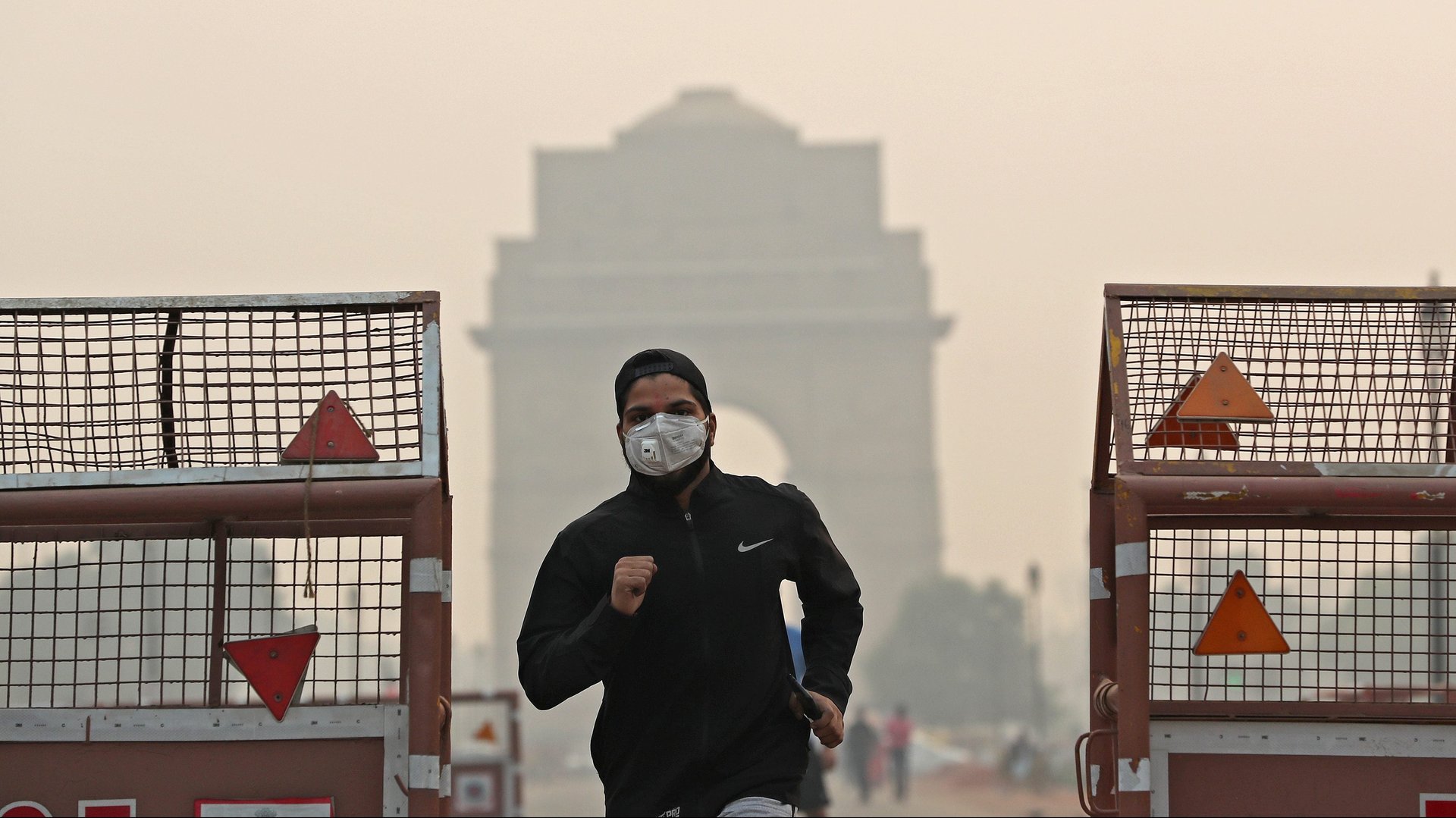Delhi’s post-Diwali air may be less smoggy, but residents have ensured it remains toxic
India’s capital region is back to its annual encounter with extreme pollution.


India’s capital region is back to its annual encounter with extreme pollution.
In the early hours of Oct. 29, the moving daily average of the concentration of a critical pollutant crossed the emergency mark of 300 micrograms per cubic metre of air, according to the central pollution control board. That’s the concentration in Delhi’s air of particulate matter under 2.5 micrometres in diametre (PM 2.5)—fine dust particles small enough to enter the human lungs and bloodstream.

This comes slightly over a day after Diwali, the Hindu festival that’s traditionally been celebrated with firecrackers. Despite court-imposed restrictions on setting off firecrackers in the Delhi national capital region (Delhi-NCR), many residents continued the practice this year, too.
“This has undone the comparatively cleaner trend achieved so far,” said a statement from the Centre for Science and Environment (CSE), a New Delhi-based non-profit. Its analysis of air pollution levels in Delhi-NCR found that the concentration of PM 2.5 jumped 10-fold during the seven hours starting at 5pm on the evening of Diwali, Oct. 27.
The festival this year arrived 10 days earlier than last year. So the city is warmer, and the formation of smog—a mixture of smoke and dust with the winter fog—has been thinner than around Diwali in previous years.
Diwali coincides with the annual period of peak pollution in New Delhi when apart from vehicles, industries, and construction, a traditional agricultural practice in the north Indian countryside acts as another source of PM 2.5 in the city.
In the few days between harvesting their monsoon crop and planting seeds for the new season, farmers across New Delhi’s neighbouring states of Punjab and Haryana burn the residue of their old crop to clear their fields. Winds carry the smoke from these farm fires to the Indian capital.
But crop residue burning till Oct. 28 contributed only 15% of PM 2.5 in New Delhi, according to ministry of earth sciences. Now, its share is expected to rise, further worsening pollution in the city.
The national and Delhi administrations have agreed to enforce much stricter traffic rules in Delhi-NCR if the concentration of PM 2.5 stays at the emergency level for two days. Odd- and even-numbered private cars will only be allowed on the road on odd- or even-numbered calendar days, respectively. The entry of trucks will be banned.
These restrictions may just be easier to enforce than those on the sale and bursting of firecrackers, which several local residents and businesses have been violating year after year.